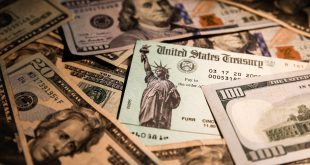Japanese equities soared on Tuesday, propelled by the Bank of Japan’s widely anticipated decision to terminate eight years of negative interest rates. This landmark move marked Japan’s first policy tightening since 2007, signaling a significant departure from its prolonged era of ultra-easy monetary policy.
BOJ’s Paradigm Shift: From Ultra-Easy Policy to Policy Tightening
In a week teeming with central bank meetings globally, the BOJ ushered in a new era by pivoting away from its longstanding ultra-easy monetary stance. The central bank not only terminated yield curve control but also discontinued purchases of riskier assets, including exchange-traded funds.
Following the BOJ’s decision, Japan’s Nikkei index initially choppy, but buoyed by the news, it eventually surged by 0.66%. Concurrently, Japanese government bond yields experienced a decline. The BOJ, in its official statement, affirmed its commitment to maintaining government bond purchases at a consistent level and pledged to escalate purchases should yields witness rapid escalation.
Yen Weakens, Markets Digest Historic Shift
The yen depreciated by 0.78% against the dollar, sliding to 150.29, as markets had already factored in the anticipated policy pivot following weeks of hints and media reports. Analysts foresee the yen’s trajectory being heavily influenced by the Federal Reserve’s policy decisions, along with projections regarding the frequency of rate cuts by the U.S. central bank.
During his press conference, BOJ Governor Kazuo Ueda emphasized the retention of accommodative financial conditions for the foreseeable future. The pace of future hikes, he stated, hinges upon economic and inflation outlooks.
Global Market Reactions
While Japanese markets rallied, MSCI’s Asia-Pacific shares outside Japan declined 0.84%, and China stocks also experienced a downturn. European bourses anticipated a lower open, with futures pointing to declines across the Eurostoxx 50, DAX, and FTSE indices.
Australia’s Central Bank Holds Rates Steady
Australia’s central bank maintained interest rates as expected, albeit diluting its tightening bias. Post-announcement, the Australian dollar depreciated by 0.63% to $0.6519, witnessing a decline of over 4% against the U.S. dollar this year.
Focus on Federal Reserve and Market Expectations
Market attention now shifts to the Federal Reserve’s upcoming meeting, with expectations leaning towards steady rates. Traders await insights into updated economic projections and comments from Chair Jerome Powell. Stronger-than-expected inflation reports last week prompted a revision in market expectations, with reduced bets on rate cuts this year.
Commodity and Treasury Market Dynamics
In commodity markets, spot gold eased to $2,155.60 an ounce, while U.S. crude and Brent crude registered slight declines. Treasury yields, after touching a three-week high, experienced a minor easing, while the dollar index surged to a two-week pinnacle.
 Noor Trends News, Technical Analysis, Educational Tools and Recommendations
Noor Trends News, Technical Analysis, Educational Tools and Recommendations




